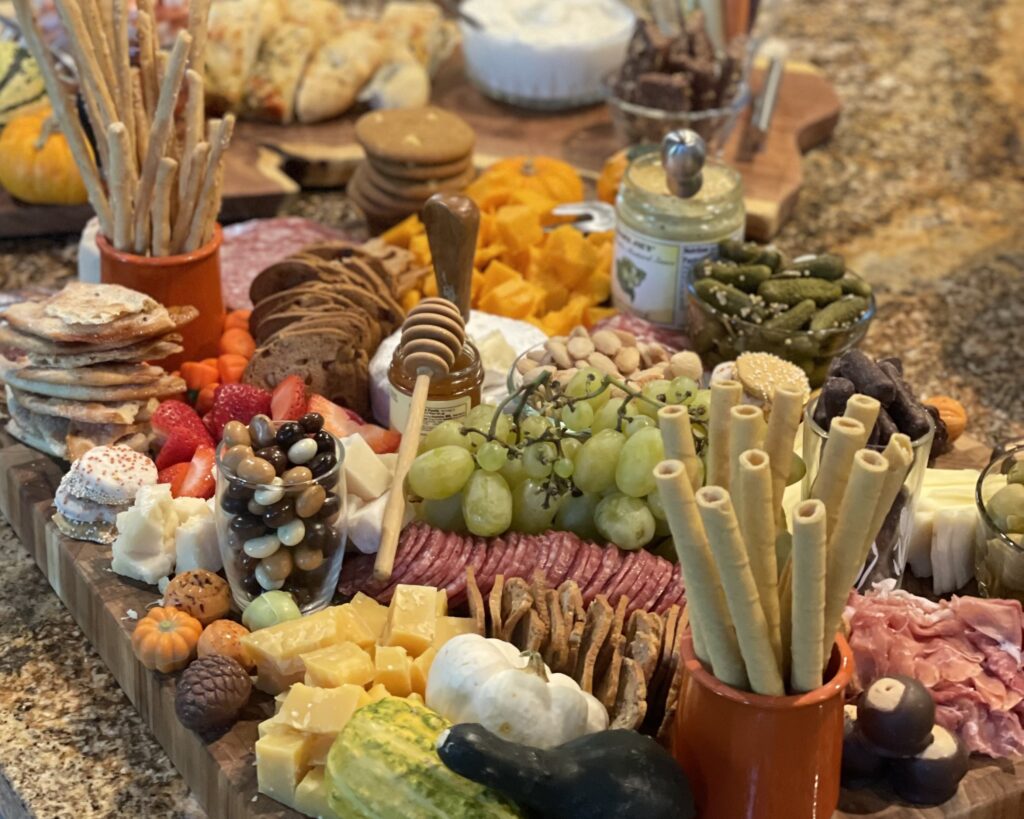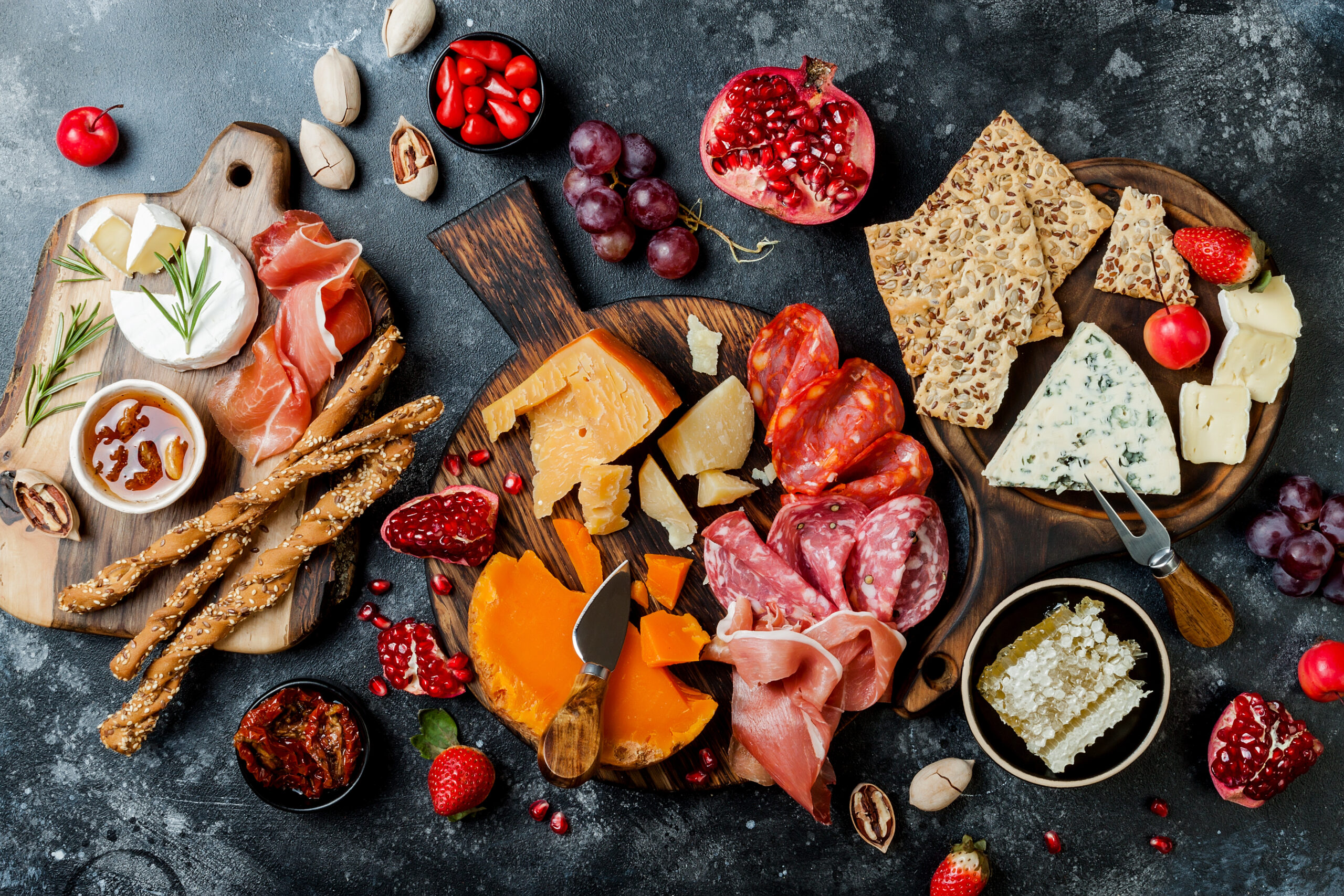With the holiday season in full swing, everyone looks forward to tasting all the fun and creative dishes served up for the festivities. My favorite dish to make for gatherings I attend is the charcuterie board. The practice of charcuterie– the art of preparing and preserving meat products through methods like curing, smoking, and fermentation–has a fascinating journey through time and inspires me as I create my boards. Here’s a quick summary of how this creative culinary tradition has evolved over time:
The History of Charcuterie
Charcuterie has ancient origins, with civilizations like the Egyptians, Greeks, and Romans using methods like salting, drying, and smoking to extend the shelf life of meat. The Middle Ages and Renaissance in Europe saw charcuterie evolve into a refined culinary art, with monasteries playing a significant role in its development. The term “charcutier” emerged in France during this period, signifying the specialization and craftsmanship associated with charcuterie.
As European settlers brought their traditions to Colonial America, charcuterie adapted to local ingredients and flavors. In recent years, there’s been a revival of interest in artisanal charcuterie, making it not only a method of meat preservation but also a celebrated culinary art form. It’s a tradition that I’m passionate about sharing during the holiday season and beyond!

How to Style a Charcuterie Board
Where to Find Items for Your Board
When finding items to fill a board I try to locate many items at local farmers markets during the warmer months, I love to look for local honey, fruits, veggies, flowers, and anything unique. In the cooler months my best friend is Trader Joe’s. Most of the miscellaneous items are found in the frozen-food aisle on the shelf above, so don’t forget to look up. When I’m shopping, I consider what could add color to the board. I also love to incorporate items people have never seen. These items are great at getting a conversation started and breaking the ice at parties!
What to Add to Your Board
In general, a charcuterie board consists of cheeses, meats, fruit, and filler items (like nuts and olives). Meat and cheese are the main focus, and I usually choose three to five cheeses and meats depending on the size of board. Here are some tips for selecting items for your board:

- When selecting cheeses, I like to get a nice variety and add color with an orange cheddar or gouda. I then like to place a nice round soft brie in the center. My very favorite cheese that can be found at Whole Foods is midnight moon – an aged goat cheese that is crystalized throughout which adds a nice crunch and has an amazing nutty caramel flavor.
- With the meats I stick to the basics: a quality prosciutto, a thinly sliced salami, and a log version cut into chunks.
- Adding fruit to the board is a chance to be creative and add some color to your board aesthetic. One of my favorite things is finding unique items to add interest such as kumquats, golden berries, strawberries, grapes (cotton candy are my favorite), dates, figs, and dried orange slices.
- Now you are ready to add the finishing touches! Try assorted fun filler items like candied pecans, Marcona almonds, mini cookies, carrots, olives, gherkin pickles, flowers, chocolate-covered espresso beans, and buckeyes.
I enjoy the art of charcuterie because the options are endless, and each board is unique. Add your own creativity to work and see what magic happens. I would love to see everyone’s creations: tag @kaswinklerrealtor in your charcuterie board posts this holiday season!



